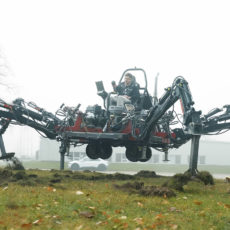
It’s not every day you spot a flying spider, but the SPIDAR (Sensing, Processing, and Intelligent Dynamics for Aerial-ground Robot) is something else. More specifically, the latter is a four-legged robot, made by researchers at the University of Tokyo’s JSK Lab, that can soar through the air and walk or crawl on the ground.
Why is SPIDAR so great for challenging tasks? Its spider-like design and unique vectorable thrust system allow it to handle various real-world jobs, making it ideal for environments requiring both flying and ground movement, such as search-and-rescue operations or inspections in rugged terrains.
- Lightweight and Regulation Friendly - At just 135g, this drone with camera for adults 4K may be even lighter than your phone and does not require FAA...
- Palm Takeoff & Landing, Go Controller-Free [1] - Neo takes off from your hand with just a push of a button. The safe and easy operation of this drone...
- Subject Tracking & QuickShots - Effortlessly capture stunning vlogs as DJI Neo smartly follows you. Getting professional footage has never been easier...

How does SPIDAR work? It has four legs, each equipped with a vectorable thrust unit (a rotor that tilts to adjust thrust direction), giving it accurate control for flying and ground movement. Unlike typical drones, SPIDAR’s smaller rotors are built into its legs, cutting down on air interference and letting it operate in close quarters.

SPIDAR can lift off, hover, and navigate in the air, with its legs shifting to keep balance. It can crawl in a unique way, lifting all four legs off the ground at once with help from rotor thrust, helping it cross rough surfaces or obstacles. It can also walk like a typical four-legged robot, using its legs to stay steady on flat ground.










